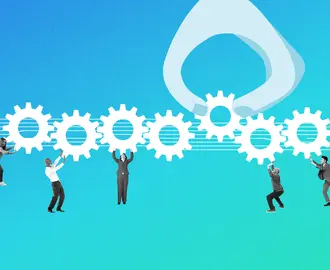Credit: iStock / Lise Gagne
Operations Management
On the factory floor, attentive managers make all the difference
When workers experience a shock to their productivity, attentive managers are more likely to reassign them to tasks that mitigate the drop in their output, according to new research from MIT Sloan economist Namrata Kala.
A working paper examines how managers at an Indian garment factory responded when poor air quality on the sewing floor caused some workers to lose productivity. The findings suggest that small, daily efforts by attentive managers can result in tremendous value for firms.
“The role of managers in task assignment is incredibly important for firm productivity, but this role has been hard to observe directly in data,” said Achyuta Adhvaryu of the Stephen M. Ross School of Business at the University of Michigan, and a co-author on the paper. “For what is to our knowledge the first time we show that managers use task reassignment to mitigate individual-specific productivity shocks.”
The challenges of observing manager behavior and task reallocation mean the research is just a first step “to understanding the role of management as a determinant of firm productivity,” the paper states.
The working paper, Management and Shocks to Worker Productivity, is by MIT Sloan assistant professor Kala, with Adhvaryu and Anant Nyshadham, also of the Ross school of business.
Line-balancing as mitigation
To study the question of how managers respond to productivity shocks and what happens as a result, the researchers centered on air quality and productivity data recorded at the factory between August 2013 and May 2014.
They focused on the sewing part of the three-step garment production process (cutting and finishing being the other two) because of the number of lines and respective supervisors and because of the standardized measure of output for each employee. Combined, this gave the team a large dataset and allowed them to see the changes in worker productivity.
The type of pollution the researchers studied was fine particulate matter, which can build up in a person’s lungs and impact their breathing — which in turn can make it difficult to work.
Such pollution impacts productivity: One standard deviation increase in pollution decreases worker efficiency by a half point, or 1% of mean (average) productivity. According to the paper, moving from a low level of fine particulate to the highest level cut worker efficiency by 3%.
Managers at the factory were able to mitigate productivity declines by reassigning workers through “line-balancing.”
“As workers on a line get exposed to fine [particulate matter] shocks, the manager can either replace that worker, shifting them to an operation for which their productivity is less sensitive to pollution and bring in a worker who is less sensitive to pollution at this operation, or simply add an additional worker to the operation at which the impacted worker is currently assigned,” the researchers write.
For this particular garment factory, up to 80% of workers would experience a pollution shock at some point during their day. And managers on more than half of all lines relocated at least one employee on a given day, Adhvaryu said.
While a majority of workers were impacted by pollution shocks, that impact on productivity wasn’t equal across the board. Productivity impacts were about 35% higher for older workers and about 60% higher for workers performing more complex tasks, the researchers write.
Kala and her co-researchers found that attentive managers were much more likely to respond to fine pollution shocks.
“Managers who report higher levels of monitoring and effort in personnel management indeed reassign workers to a larger extent during high pollution periods, and those managers also suffer smaller productivity declines as a result of the shocks,” the co-authors write.
The researchers noted a particular worker could be highly productive at Task A and less productive at Task B during low-pollution hours. However, when the air pollution rose, the worker was more productive at Task B than Task A — meaning productivity dropped more precipitously for certain tasks than others.
“For task reallocation to be beneficial in mitigating productivity losses due to pollution, it is important that different workers exhibit varying degrees of losses due to fine PM exposure on different tasks,” the paper stated.
“If this is the case, then a manager has the opportunity to reallocate a worker who has become particularly unproductive on a given task to a different task on which her productivity is less sensitive to pollution and he can replace her with a worker whose productivity on the original task is less sensitive to pollution.”
Training managers
The research suggests some takeaways for business leaders.
First, productivity shocks come in all shapes and sizes, Adhvaryu said.
“Pollution shocks have some properties that make them useful to study in this context,” he said. “But health shocks of other kinds — or stress due to income or family-related shocks — may have similar impacts that would call for active recognition and management.”
“If managerial inattention is malleable via training (or identifiable via screening), it may be possible to either train managers in this specific regard to equip them better to deal with shocks,” they write, “or to select better managers on this dimension to achieve the same goal.”



